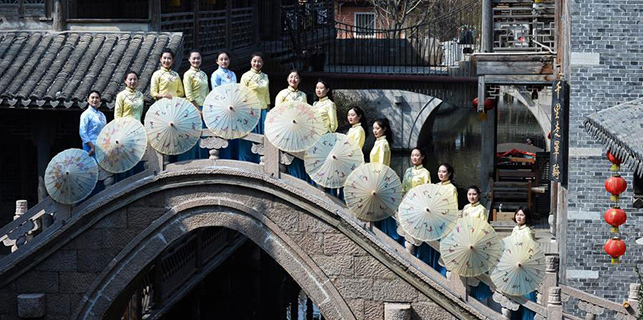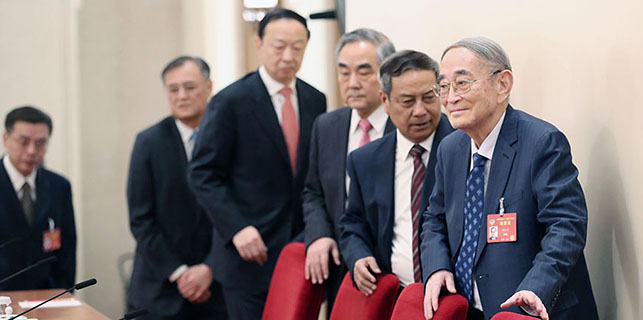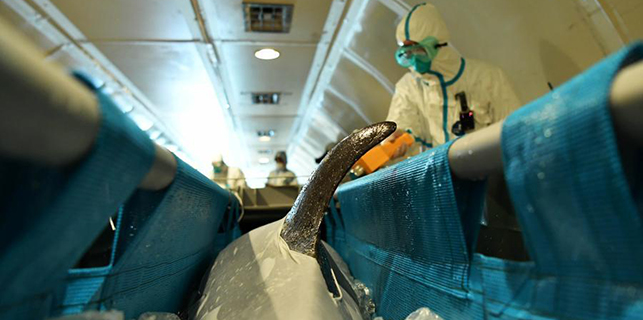Fujian: A new star on ancient maritime silk road
FUZHOU — Fujian, a coastal province in eastern China where Chinese fleets started their first maritime expeditions 600 years ago, is pursuing a bigger role in China's foreign trade.
In mid-March, a special train carrying 38 containers of liquid crystal displays, worth 31 million yuan ($4.5 million), will arrive in Lodz, Poland.
It is the first Chinese train to Europe on the EU-China Smart and Secure Trade Lane (SSTL).
A pilot project between the EU and Asia to fully implement the World Customs Organization Framework of Standards to Secure and Facilitate Trade, SSTL allows traders to quicken customs clearance with enhanced logistics, and consumers to track goods.
"Given the SSTL initiative was previously confined to sea transport only, this train has broadened the services to railways," said Nan Zhihui, chief of the Clearance Supervision Bureau of Xiamen Customs.
Apart from the SSTL program, Xiamen is also among the 12 Chinese cities that have opened railway services to Europe and Central Asia, due to a drastic rise in freight volume and geographical advantage.
By March 1, 6,132 containers of goods worth 1.69 billion yuan in total have been exported through the China-EU railway route opened in Xiamen in August 2015.
Xiamen's exports to Poland alone increased 10-fold last year. This year, its transport capacity may rise by a further 50 percent.
A traditional shipping center, Xiamen also has sea lanes to Southeast Asia in the south and Taiwan in the east.
This has made Xiamen as well as Fujian a good choice for the country to rejuvenate ancient international trade routes by land and by sea, namely the Silk Road economic belt and the 21st Century Maritime Silk Road.
Xing Yi, vice-general manager of New Silk Railway Xiamen, which runs the Xiamen-Europe railway route, said that in April Xiamen would open direct rail services to Moscow.
To boost marine trade Fujian has issued a package of policies to firm up the province's role as a key international hub, which includes infrastructure construction, trade and investment facilitation and industry cooperation.
Jiang Xiong, president of China ASEAN Marine Product Exchange, said the exchange had planned to establish a branch in every ASEAN country to promote maritime trade.
He said the exchange had enrolled 358 member fishery enterprises and 2,187 trading partners home and abroad, completing trading of 766 million yuan by the end of 2016.
Local fishery companies have also set up nine deep-sea fishing bases with an aggregate area of 6,667 hectares in Indonesia, Myanmar, Mauritania and other countries along the maritime silk road.
"We hope to build an industrial chain for all relevant companies to benefit," Jiang said.
When Zheng He, envoy of the Chinese Emperor of the Ming Dynasty, started a marine expedition from 1405 to 1433, Chinese silk, porcelain and tea were sent to Europe.
"The current external trade of Fujian also boasts of a strong tea flavor," said Wu Rongshan, president of Fujian Sanhe Tea Company. "China's tea brands are entering the western market."
Fujian provincial government organized an event introducing Fujian tea to Britain, France, and Spain in late February, where 15 local tea companies signed contracts worth 486 million yuan with their British counterparts. A cultural center highlighting the tea of Fujian was also launched in London.
"The Europeans are always curious about and delighted by Chinese tea not just for its fine quality but also the profound tea culture," he said.
Chen Cangsong with the United Nations Maritime-Continental Silk Road Cities Alliance said that the international trade route also facilitated the overseas investment of local private enterprises.
Teaming up with the China-Africa Development Fund, China Development Bank and Industrial Bank, the alliance has set up several 10-billion-yuan funds to assist local companies to develop in Southeast Asia.
In the first phase, 3 billion yuan has been activated, targeting enterprises in footwear, textiles, food, clothing and building materials.
"With such a platform, Chinese enterprises can be more involved in the overseas markets," Chen said.









